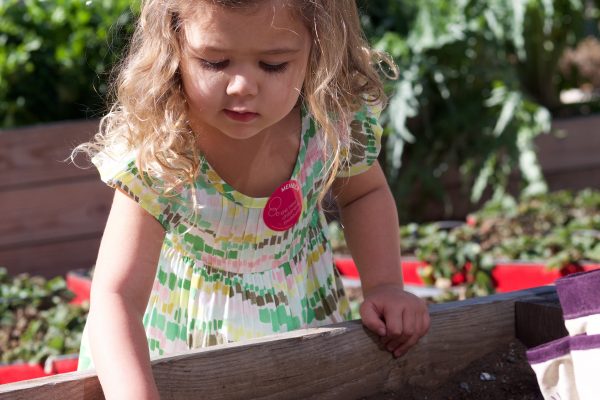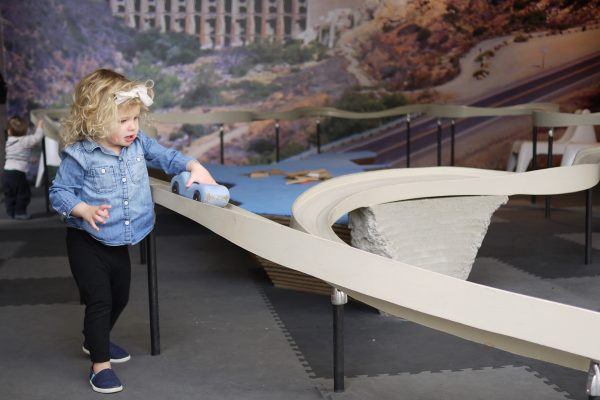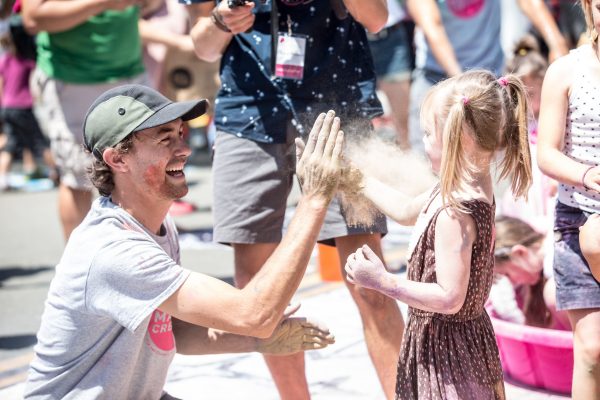toddler time at home: nature dough
Engage in an exploratory, sensory and nature-centered experience with your early learner! In this ScholarShare 529 Toddler Time at Home Nature Dough activity, your little ones will learn how to create homemade Play-Doh from scratch by making a dough mixture and using items from nature as tools to manipulate shapes and texture within it. This simple dough recipe and the accompanying activities merge concepts from science, math and art, as well as provide endless avenues for exploring and discovering ideas together!
Nature Dough Tutorial
AGE: 2+ years (with adult support)
TIME FRAME: 45 min
SUPPLIES:
- 1 cup all purpose or corn flour
- 1/2 cup warm water
- 1 teaspoon cooking oil
- Spoon or mixing tool
- 2 large bowls
- Kneading mat or clean flat surface
- Nature elements (e.g. real or artificial plants, flowers, sticks)
- Bag or basket (for holding nature elements)
- Tools for manipulating dough (e.g. rolling pin, cookie cutters, fork, popsicle stick, plastic cup, etc.)
- Food coloring, dried herbs or essential oils (optional for added color or scent)
directions
1. Make the Nature Dough. Begin by making your dough together. Let your child help with the mixing, pouring and kneading of the dough.
- In a large bowl add 1 cup of flour.
- In another bowl, add ½ cup of warm water and 1 teaspoon of oil. If choosing to add food coloring or essential oils for color and scent, add a couple drops to the water and stir. Encourage your child to provide descriptive language to identify the scents. Note: Due to the ingredients in this activity, dough is not meant to be consumed.
- Pour the liquid mixture into the bowl of flour.
- Mix together the ingredients until a ball is formed. If mixture is too sticky, add more flour. If it’s too dry, add more liquid or oil.
- Once a ball is formed, sprinkle flour on a kneading surface. Begin to knead the dough to the desired consistency. Sprinkle flour as needed while kneading.
- Once the dough is at the desired consistency and texture, cover it in plastic and set it aside for after your nature hunt.
2. Go on a nature hunt. Grab a bag or basket and begin your nature hunt together. Collect natural elements (e.g. leaves, sticks, pods, etc.) and then use them as tools in the dough.
3. Create nature pressings. Roll out the dough on a table or surface using your hands or a roller. Then manipulate the dough by using your fingers and other found kitchen objects to press, stamp, poke and roll your nature findings within it. Allow your child to lead this exploration and to talk about their discoveries. Extend your little one’s exploration by adding toys that can be cleaned in the sink or various types of found tools for manipulating the dough (e.g. fork, popsicle stick, straw and plastic cup). Get creative!
4. Preserve your creations. Your child may decide to create an image in their Nature Dough or want to preserve what they make. Keep their objects pressed within the dough. Then, air dry it for 24 hours, keeping the objects inside the dough. Once dry, the objects can be removed, which will leave imprints (traces) of the nature items. Your child may also prefer to simply explore the materials and start over and over again. The process of trial and discovery is valuable as well.
5. Wrap it up! To conserve your dough for a few more days of exploration, wrap it in plastic wrap, beeswax paper or place it within a closed container inside the fridge. Observe the changes and continue to play with it in different ways. Remember to add more flour if it becomes too sticky and to add a little oil if it becomes too dry.
Tips
- Provide support and redirection when needed, explore with each material and find ways for your child to engage in open-ended play. This process may be messy, so keep in mind the time that may be needed for cleaning and invite your child to take part in that step. Also, a great way to get modeling dough off hands is by rubbing your hands in flour.
- For older learners: Encourage your child to make observations and ask them open-ended questions while you create. For example, “What do you think will happen if we add water?” “How does it look or feel?” Encourage independence with stirring and pouring ingredients. Have them count objects as they are scooping and mixing.
- For younger children: Have your little one help you hold the handles of the bowl or assist you with pouring and mixing. Model the language to describe the actions, scents, textures and counting.
Toddler to Transitional Kindergarten Learning Connections
Making Nature Dough and exploring nature provide endless ways of engaging in open-ended discovery and play, as well as experience with fine-motor development, science, math, language, literacy and art. Reading is also a wonderful vehicle for learning and for introducing new ideas to early learners. Select any age-appropriate books that explore nature. Read them together with your child before or after the Nature Dough activity.
Recommended Related Reading:
- Make it Grow by Debbie Powell
- Lola Plants a Garden by Anna Mcquinn
- Inch by Inch by Leo Lionni
- The Hike by Alison Farrell
- Plant the Tiny Seed by Christie Matheson
Preschool Learning Foundations Standards (Social Emotional Learning, Visual Arts and Mathematics)
Age 48 Months
- Children become engaged in learning opportunities, approach learning with enthusiasm and have confidence in their capacities to learn more. But they may give up when facing difficult problem-solving challenges.
- Compare visually (with or without counting) two groups of objects that are obviously equal or non-equal and communicate, “more” or “same.”
- Make somewhat regular-shaped balls and coils out of dough or clay.
Age 60 Months
- Children are self-confident learners who become actively involved in formal and informal learning opportunities by asking questions, proposing new ways of doing things and offering their own ideas and theories.
- Compare by counting or matching two groups of up to five objects and communicate, “more,” “same as,” or “less than.”
- Make more representational forms out of dough or clay, using tools (e.g. a rolling pin or a garlic press).




